Notes
The State of the News Photo: Part 2 of 3
This is the second installment of the online version of the “State of the News Photo,” a talk presented June 23, 2012 by Michael Shaw, publisher of BagNews, at the Photoville festival in Brooklyn. You can find the three post archive here.
*** *** ***
The News Photo as Spin and the Editorial Challenge (with special attention to the White House; the Pentagon; and political image makers in the PR Industry.)
When we talk about the state of the news photo, what concerns me most is the extent to which the photographer, the editor and the publisher can be co-opted by the biggest players in the political persuasion game – the White House; the Pentagon; and the political image makers in the PR Industry.
I’d like to address each of these influencers, one-by-one, with an example.
This photo is a wonderful illustration of the aesthetic and tactical brilliance of the Obama PR machine, creating iconic imagery by playing off of iconic imagery – to control the frame and produce the most effective cultural, political and character spin.
In publishing this photo simultaneously with the unofficial start of the Obama – Romney campaign, what most of the media let slip by was the fact this was not an even-somewhat candid moment captured by a wire photographer…
but a White House photo completely formulated and composed on the famed Rosa Parks bus at the Henry Ford Museum during an Obama fundraiser there while the photo press was kept at bay.
In subsequently publishing this photo, much of the media not only accepted the staged element as matter-of-fact but actually enabled the White House by imagining this as a candid experience, the world somehow a fly on the wall.
ABC called this “a personal moment” for Obama. MSNBC called it a “tender” moment.
Further relinquishing their platform, many of the media accounts not only touted the photo but actually let the President embellish it by publishing his custom-written, extended quote about tenacity, history, dignity, about people who never made the history books, and about the American dream.
(In prefacing the quote, NPR wrote: “We think the picture speaks for itself, but here’s what the President had to say about his visit…”)
The striking element about the photo itself is how reminiscent it is of the famous Library of Congress photo of Rosa Parks you see here.
Mindful of seat location, Obama situates himself one seat further back than Parks relative to the historical photo. It’s a move that reinforces Parks’ singularity, buffers the White House from the perception of presumptuousness and also lends some humility, the President parking himself a little closer to the now visible back of the bus. As for the look out the window, though, Obama unabashedley goes for the most direct comparison.
I believe the photo works as well as it does because of the subtlety of Obama’s racial identity — Obama having become, at the same time, America’s first African-American president and it’s first post-racial one. At the end of the day, what Obama achieves with this brilliant White House rendition is not just an analogy to Parks and the watershed days of the Civil Rights movement but an advantageous campaign reference — even more recently and historically — to himself
War and Propaganda
As I wrote on BagNews, I don’t in any way intend to disrespect the photographers who risk their lives to put eyes on America’s war in Afghanistan for citizens and news consumers back home. I also acknowledge sincere efforts are made to find and explore different editorial themes within the context of medevac missions, focusing on the aid and rescue of Afghani civilians, for example, or the painful personal odyssey of an individual solider.
Still, I’ve become fascinated with the military embedding program and the steady flow of newswires images of medevac rescues– at least seventeen photo stories in twenty-four months that I’ve counted — the images from these missions often standing in for imagery from an actual war front or a more descriptive window on the war.
This photo above by Getty’s Brendan Sullivan was published in June 2010.
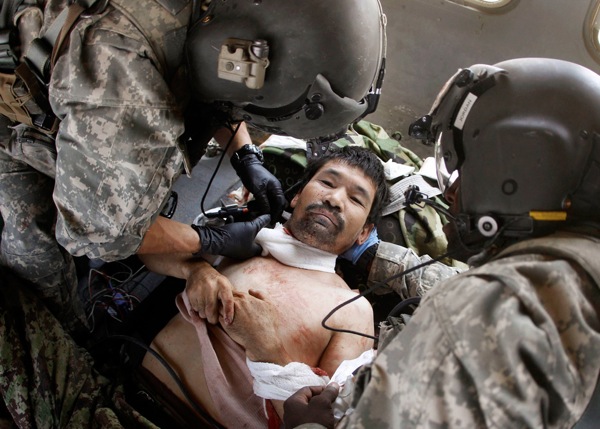
This was shot by Oleg Popov of Reuters on Aug. 31, 2010.
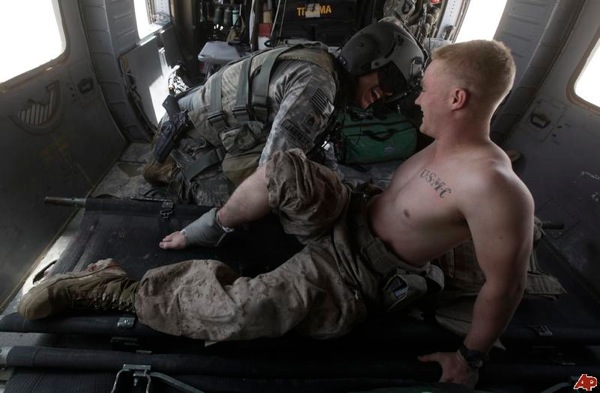
This is from September 2, 2010 by Brennan Linsley of A.P.
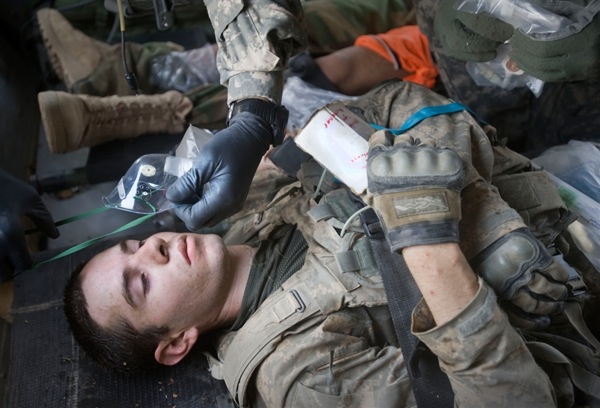
This is by Louie Palu for the Alexia Foundation via Zuma Press published September 28, 2010.
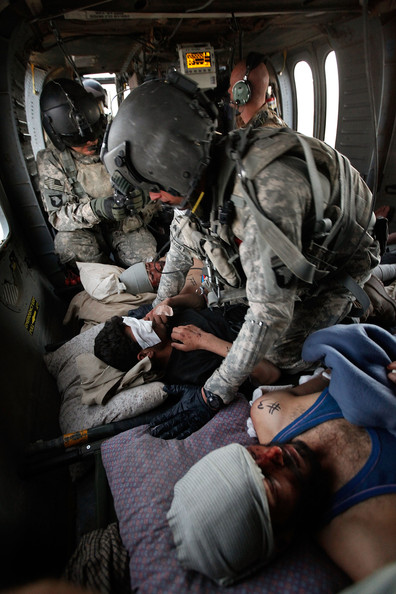
This photo by Getty’s Scott Olson is from September 2010.
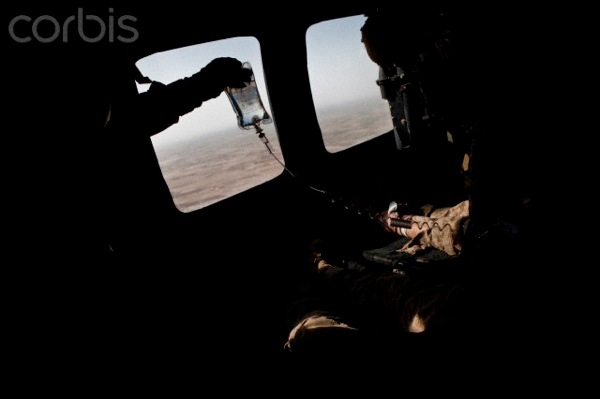
This was shot by Bryan Denton for Corbis on October 8, 2010
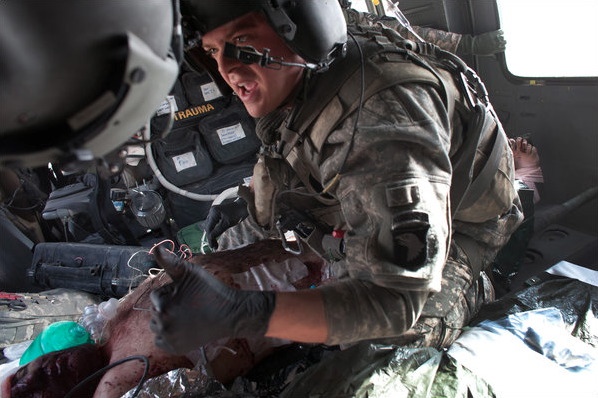
This is the first of three different stories all published within a few weeks of each other in January 2011. This image is by Tyler Hicks for The New York Times.
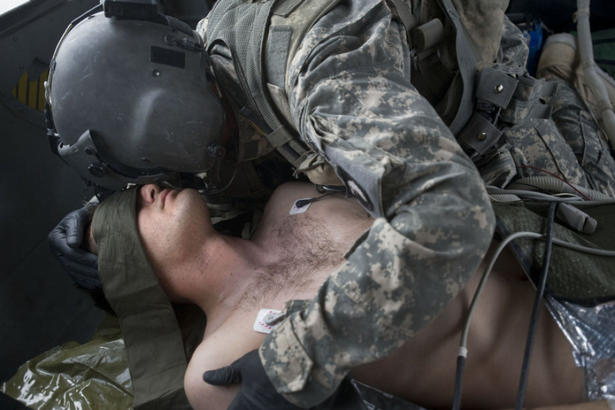
This is also from January 2011 by Louie Palu for The Toronto Star.
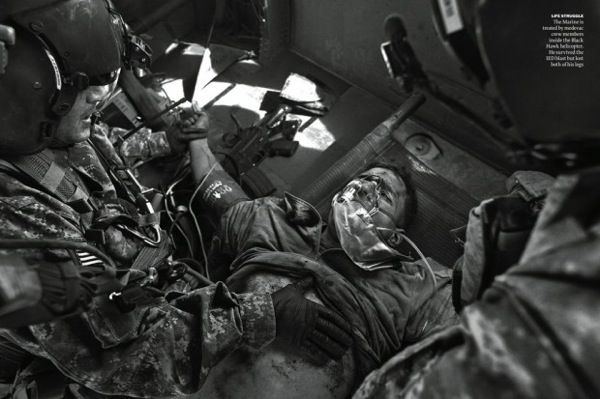
And, this photo from January 2011 was shot by James Nachtwey for TIME.
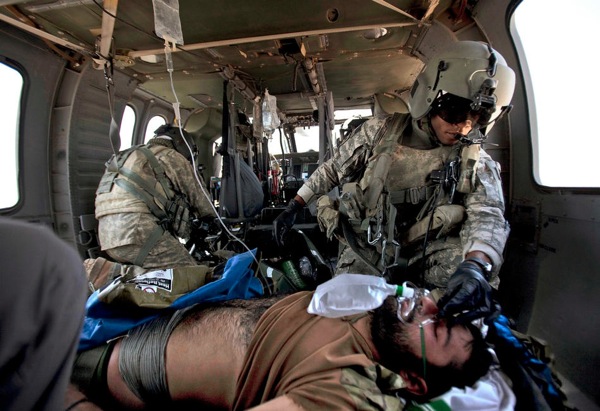
This shot is by AP’s Kevin Frayer and was published by the Denver Post in May 2011.
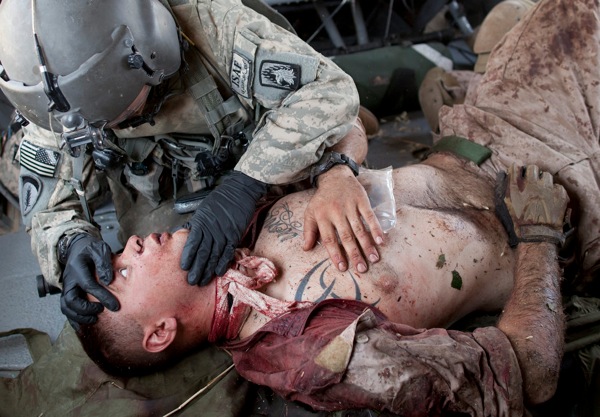
This image, from Anja Niedringhaus for AP, was published June 2011.
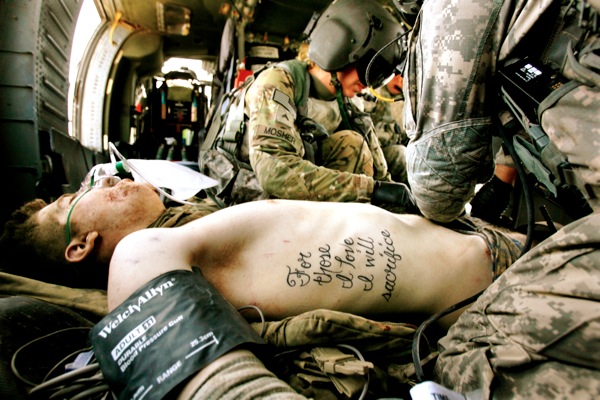
This is from June 20, 2011 by Laura Rauch of Stars and Stripes.
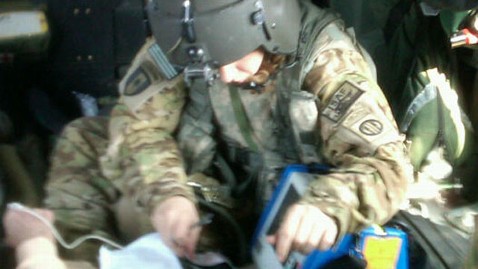
Jake Tapper of ABC photographed this scene on November 5, 2011
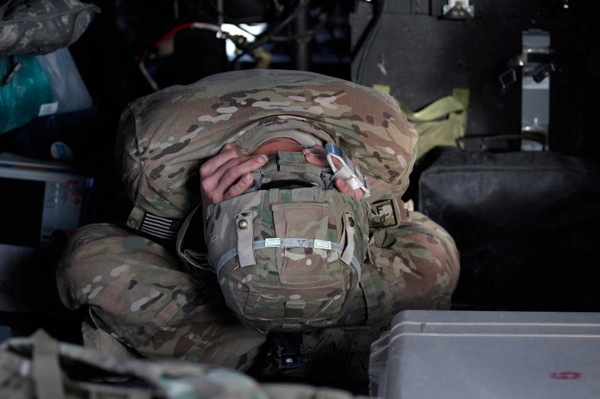
This photo by Umit Bektas of Reuters was taken on November 21, 2011.
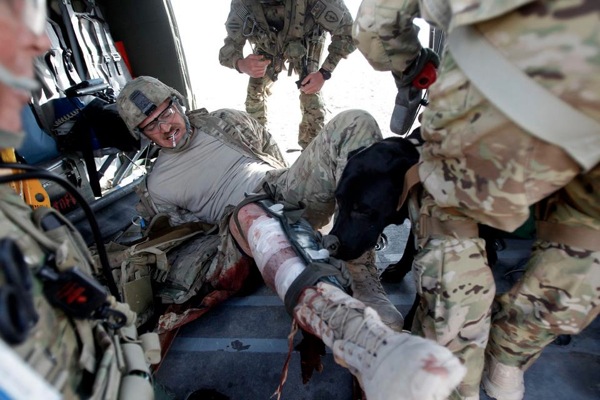
This is from April 9, 2012 by Baz Ratner/Reuters.
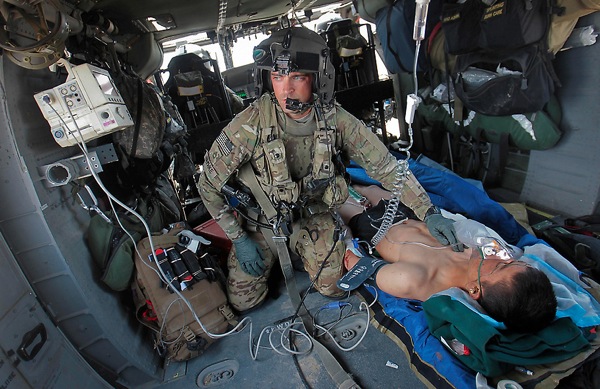
Finally, this shot — from May 16, 2012 — is by Danish Siddiqui of Reuters.
As I further wrote:
What these images do document is something terribly wrong with the way the reporting effort is being constrained by the government, the embedding policy compromising the integrity and the larger mandate of each of these skilled photographers to deliver us the war in its essence. In that regard, what we’re looking at here is actually a snapshot of a policy in which journalists, trained to capture what their instincts tell them the public needs to see are instead doing their vivid best to illustrate a scene on which the government has them trained.
Further evidence of military propaganda can be seen in the the Obama Administration’s major offensive in Afghanistan, led off by what was framed as “the battle for Marja.” In early 2010, when the Obama Administration, after a long review,finally launched its surge in Afghanistan,the focus for two weeks, in stories but mostly pictures, involved capturing the city of Marjah.
First described by the Marines as a city of 80,000, news reports eventually ballooned that number to 125,000.

Looking at the dramatic photos over the multi-week offensive, however, it seemed to me the backgrounds looked “a little sparse.”
Eventually what cames to light studying the photos, and later confirmed by independent reports, is that—
except for some scattered buildings in a region loosely bearing that name — there really was no Marjah.
Political Celebrity + PR Firm Influence
The third major territory where we see visual persuasion in place is in the morphing of politics and celebrity culture.
If we’re to stand to benefit as a society by a more objective coverage of personality – and a more realistic impression of figures who can and will shape our cultural values and our political destiny — the issue we’re facing is a society and an increasingly more tabloid media culture obsessed with glamour and political celebrity — with the fondest eye for trouble makers, bad actors and whoever is sexy.
It’s as if any interest in good character has been superceded by colorful characters – the more outrageous, the better. And if Asma Assad is just the poster child of the moment, it goes a lot wider and deeper.

Here we see the late right wing attack journalist Andrew Breitbart (otherwise known as “the rage machine) paradoxically posing in a bubble bath for TIME Magazine.
This trend, by the way, is not exactly new.
Here, for example, is Condolezza Rice, who has worked hard to cultivate an elegant as well as a “girl-next-door” image despite her role as a war hawk in the Bush Administration.
You might remember the black dominatrix boots she wore at the Wiesbaden Army Airfield in Germany in 2005 catching the fancy of the media (and the fashion world) two years into the Iraq debacle?
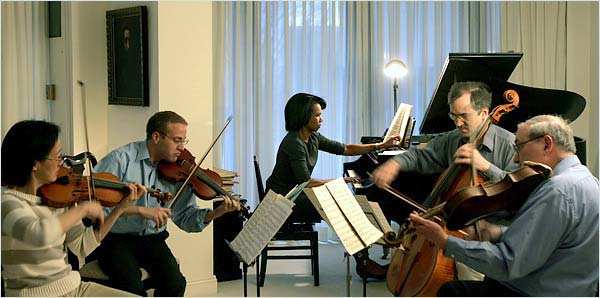
In spite of rapidly escalating opposition to the war, this photo accompanied a feature about Condi’s love affair with the piano in the NYT in ‘06.
More recently, we had the insta-hyping of Rick Perry bestowed here in pre-coronation,in a portrait by Platon. I have to wonder if this celebritization is getting more extreme and happening faster, knowing that the candidate was, upon publication, already in full meltdown, accentuated by the fact he was on pain killers.
With the disclosure a couple week ago that a London PR firm representing the Assads helped generate fawning exposure in Europe and the West,

a lot of focus — especially in the photo/journalism community — has been directed toward James Nachtwey’s promo images of Asma Assad for an online feature in Vogue just as the Arab Spring was gaining traction.
If this news were to slip away, however, without a larger examination of the incestuous relationship of visual media and political celebrity, with so much of the preoccupation and adulation of these actors greased by PR firms, we would be burying our lenses in the sand.
Not to mention, the Assads, particularly Asma, had been assiduously working that territory, this layout representative of dozens of spreads in the past decade —
including this photo, from an April 2010 visit to Paris, looking like one more fashion shoot,
and this photo from Buckingham Palace dating all the way back to Dec 2002.
One other PR industry tactic badly in need of exposing is the political celebrity book and book tour.
Produced allegedly for historical purposes, these volumes provide the vehicle, the rationale and the excuse for flooding news shows and online stories with these people’s faces, as a vehicle for revising or erasing history, and as a PR-industry-determined demarcation point establishing that it’s now okay for these people to be back in circulation again incarnated as someone reconstituted and free of the past.
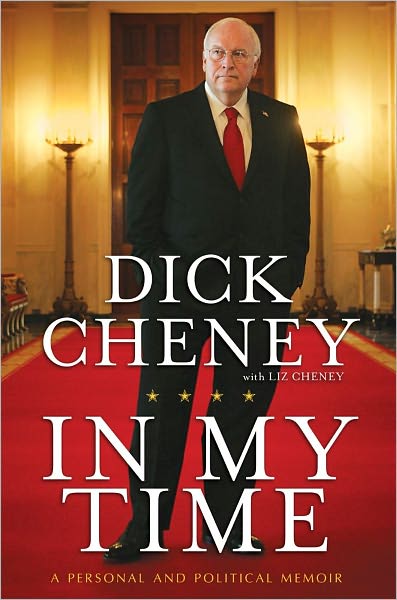
For well crafted visual propaganda, it’s worth taking a second for a closer look at this Cheney cover shot in the White House’s Cross Hall where the President walk to address the nation. Not only does the shot have an imperial vibe to it with the lighting and the scones, the suggestion – with Cheney appearing alone – is that he was “the man behind the man,” or the real President.
I should also emphasize that these covers — the way the book tours, for weeks on end, in local market after local market, draw media attention – must be seen as news images as legitimate as any other.
(End of part 2. — Part 3: Recognizing the greater content value and editorial capabilities of news photos.)
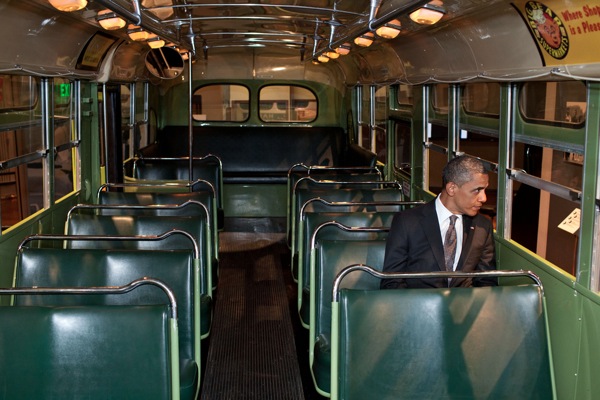
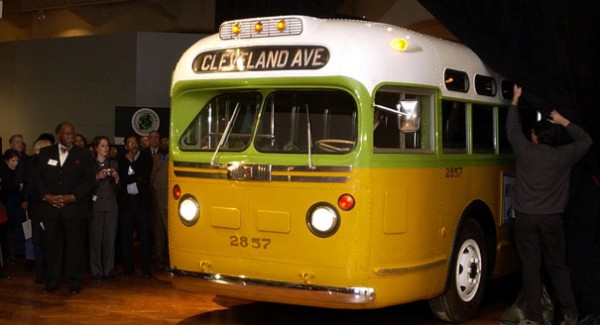
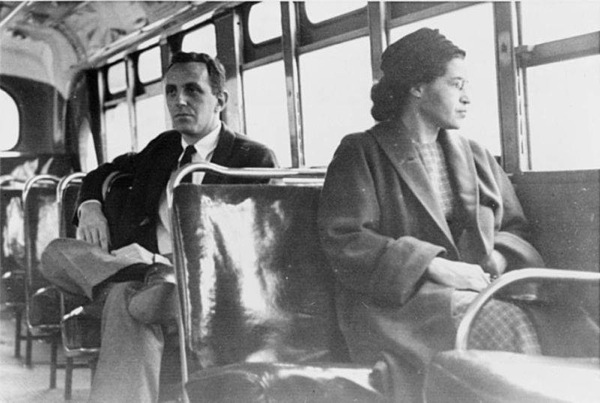
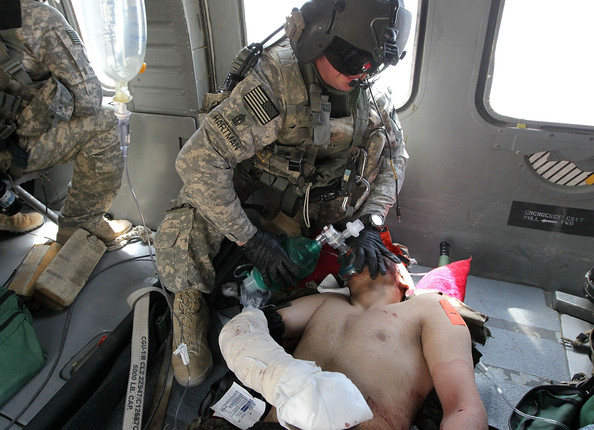

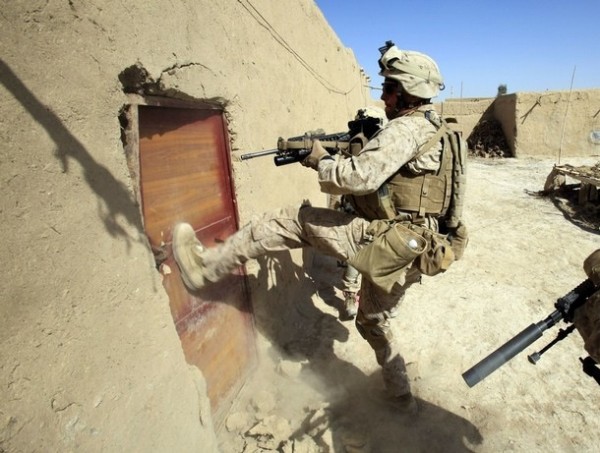
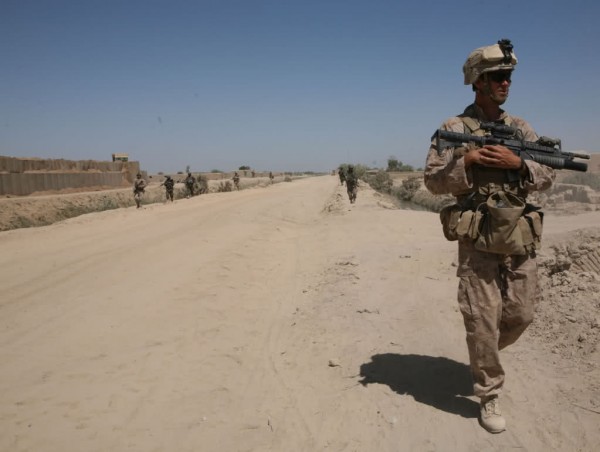
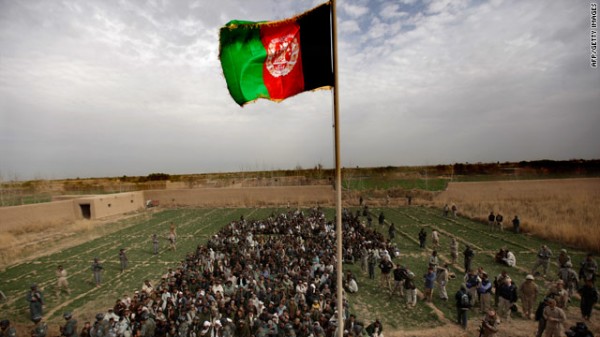
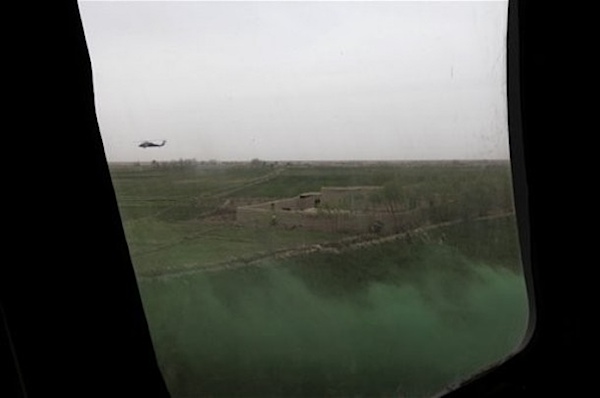
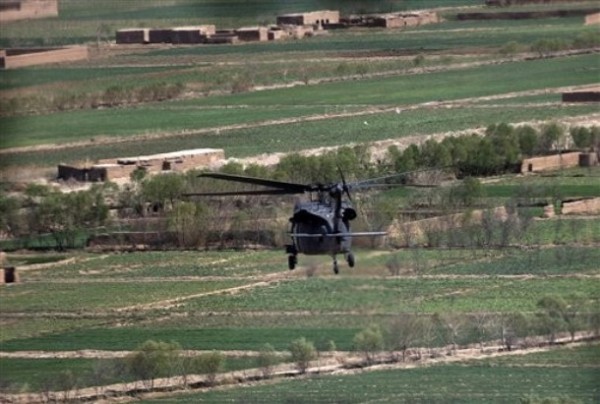
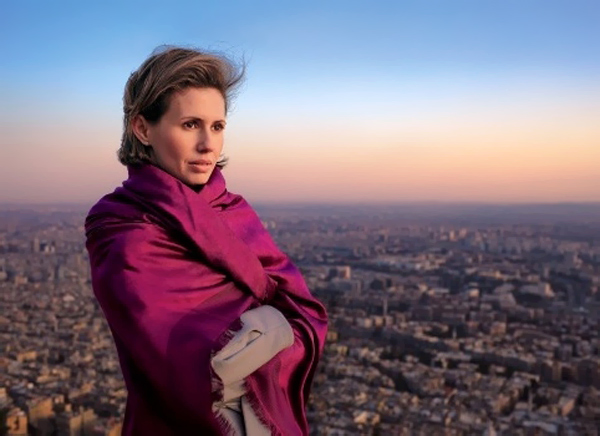
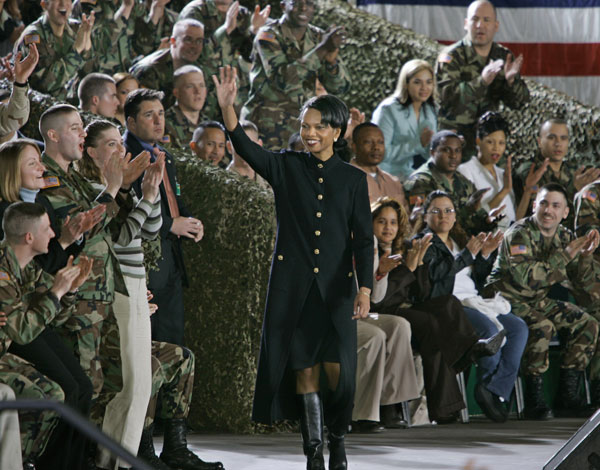
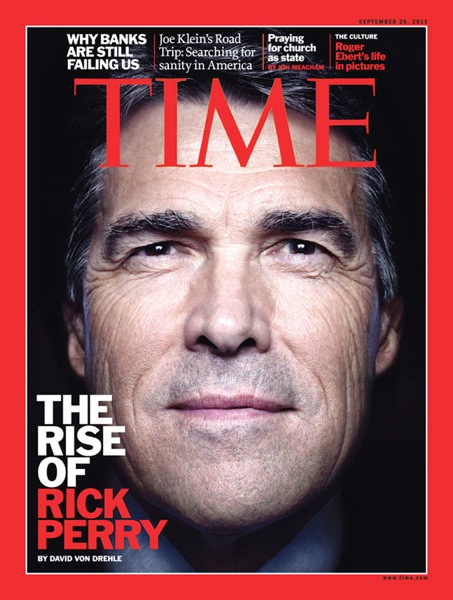
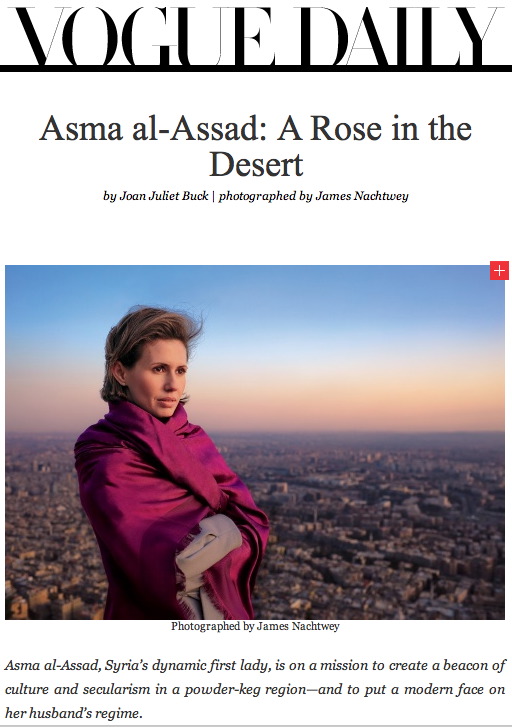
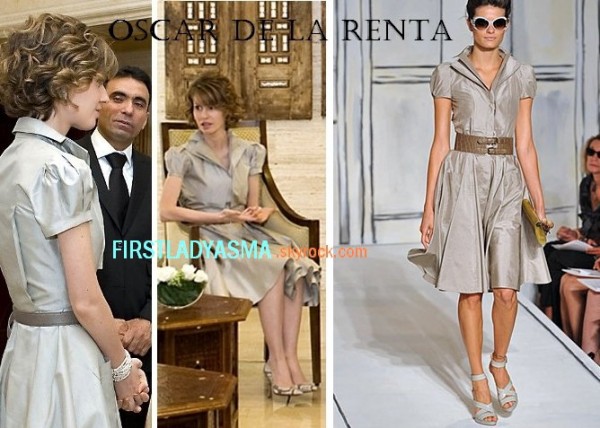
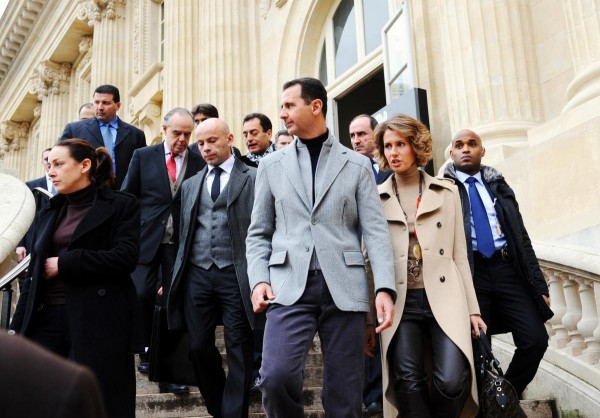
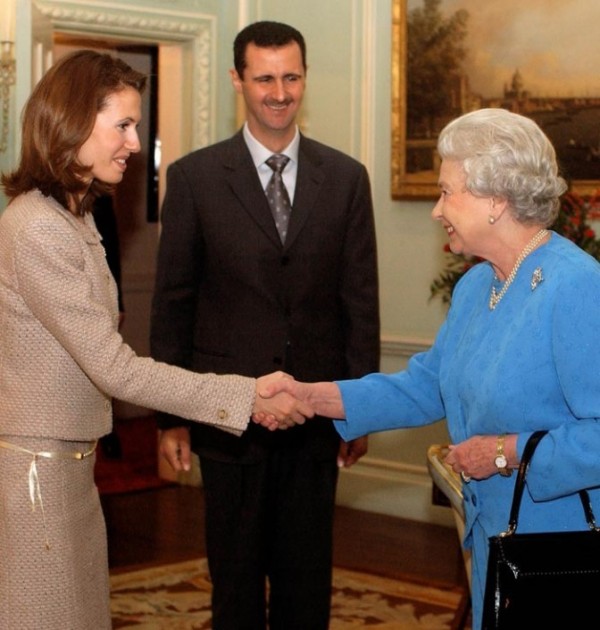
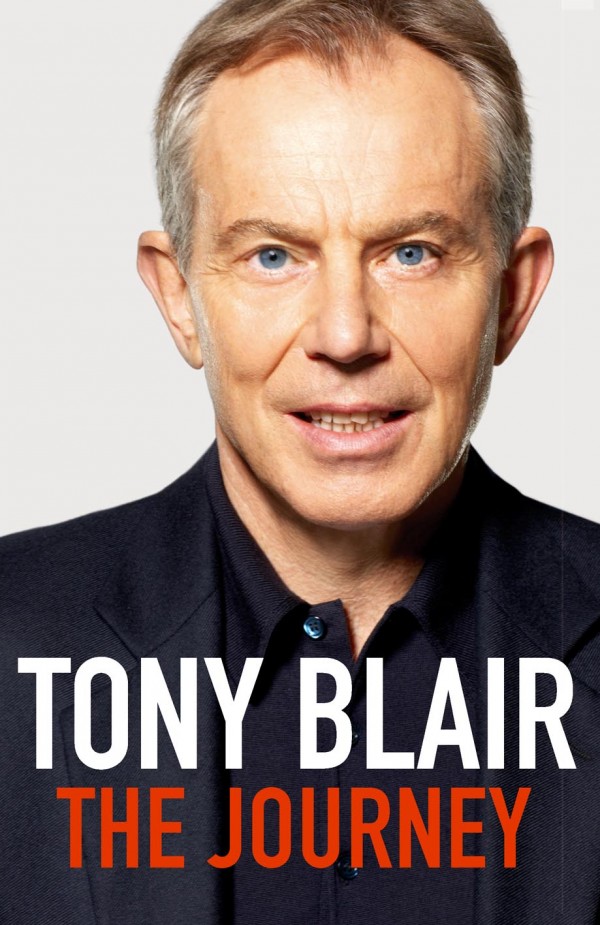
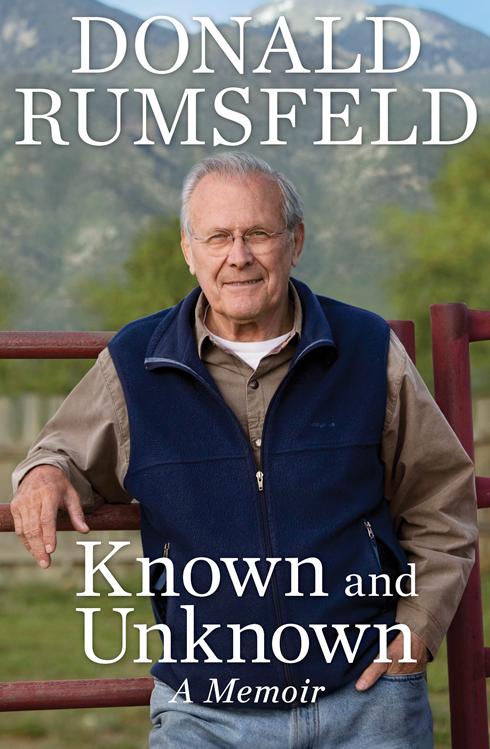
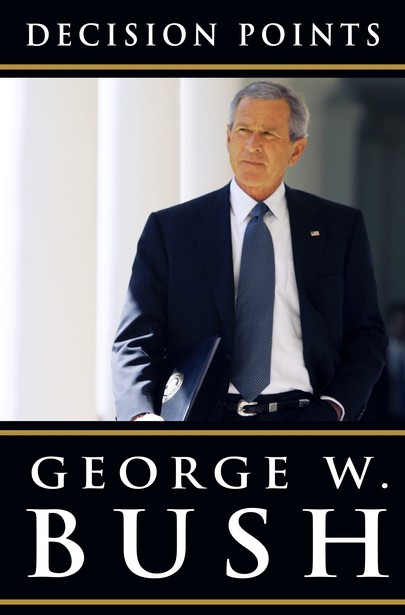
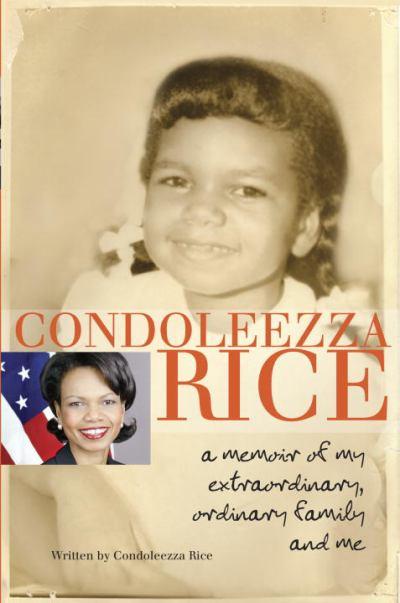
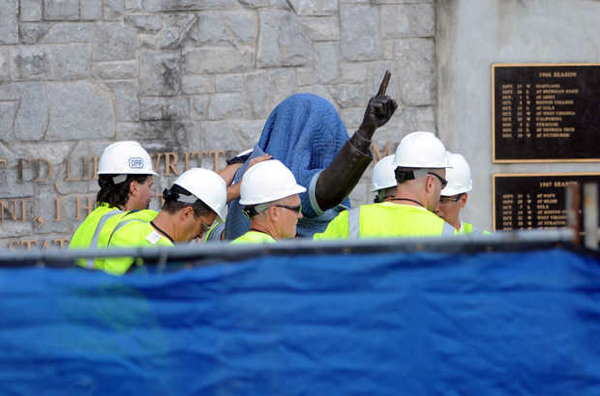
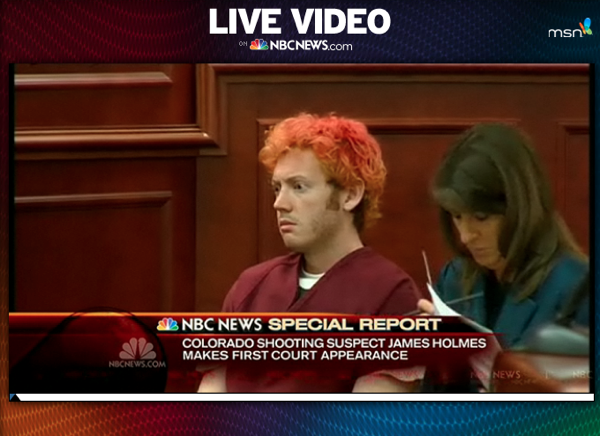
Reactions
Comments Powered by Disqus